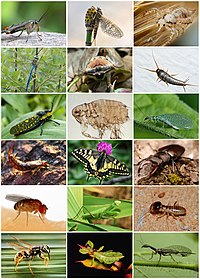
Photo from wikipedia
Abstract Insects encode proxy environmental information about regional vegetation structure in the stable carbon isotope (δ13C) composition of their tissues. However, uncertainty lies in the exact relationship between “community” insect… Click to show full abstract
Abstract Insects encode proxy environmental information about regional vegetation structure in the stable carbon isotope (δ13C) composition of their tissues. However, uncertainty lies in the exact relationship between “community” insect δ13C values and the overall structure of the vegetation from which the insects come, specifically the cover of C3 and C4 plants. This study aimed to determine this relationship using modern samples of insects collected from sites ranging from rain forest (high C3 cover) to savanna (high C4 cover) across an environmental gradient in tropical Australia. Insect δ13C values were strongly related to modern variations in C3 and C4 cover, although difficulties arose when estimating the vegetation structure of sites with low vegetation cover in arid central Australia. We further found the best models for predicting vegetation structure also included additional constraints provided by variation in precipitation. Overall, our results confirm that ancient insect δ13C values, such as those recovered from insectivorous bat and bird guano deposits, can indeed provide a robust palaeoenvironmental proxy for inferring the trajectory of past vegetation change in the tropics.
Journal Title: Palaeogeography, Palaeoclimatology, Palaeoecology
Year Published: 2020
Link to full text (if available)
Share on Social Media: Sign Up to like & get
recommendations!